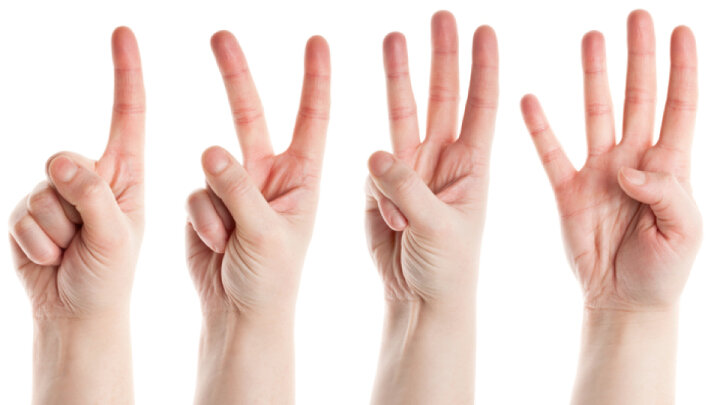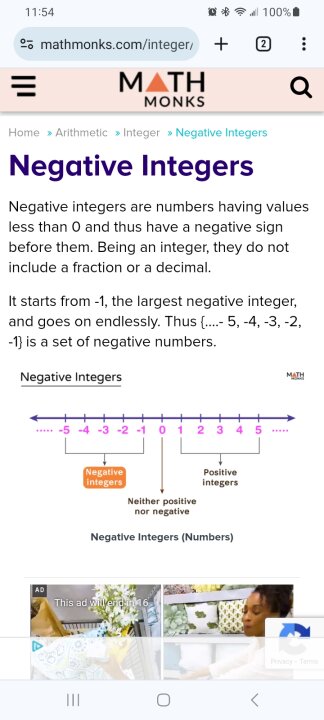zero plus zero equals zero
zero minus zero equals zero
zero times zero equals zero
zero isn't really the smallest number, it's the empty number, null, nothing. If it was simply a small number, even the smallest number, than zero + zero > zero. But it isn't.
zero minus zero equals zero
zero times zero equals zero
zero isn't really the smallest number, it's the empty number, null, nothing. If it was simply a small number, even the smallest number, than zero + zero > zero. But it isn't.
View 36 more replies »
@Luke73You have it backwards. mathematics has to do with numbers; numbers exists with or without mathematics. Mathematicians didn't even assign names to the number of fingers below. Those symbols and words evolved with languages.
Luke73 · 26-30, M
@Heartlander You're completely wrong but let's assume you're right. What is mathematics for you then?
@Luke73 Now that's a more difficult question to answer than that zero thing :) So give me a while to wrap my arms around it. I have a benchmark reference gained from others. Simple, eloquent yet broad. But it wasn't about mathematics.
This message was deleted by its author.
Luke73 · 26-30, M
@allygator18 I'm aware that there are two definitions but in neither case you prove that 1 or 0 is the smallest, you just assume it. That was the point of this point.
This message was deleted by its author.
JoyfulSilence · 51-55, M
Isn't it just assumed to be so, by definition?
That is, to define the set, start with an element X(0), then for each n, add a new element
X(n) > max { X(m) | m < n }
Then label X(0) with the word, "zero."
Of course, this is sort of circular, since the indices are natural numbers and we assume they have an ordering.
Another approach might be to take an element x, and label it zero. Then make the set { x, {x} }, and call it one. Make the set
{ x , {x} , { x , {x} } } and call it 2. And so on.
As you go, you let n be the set
{ x , {x} , , ..., { x , {x} } , ... } }, which has n elements.
Then you define the linear ordering of the labels using set containment of these sets.
0 is in 1 is in 2 is in .... is in n.
The element x is in all sets, so its label zero is the smallest number. Furthemore, a label is a superset of its predecessor label's set, and a subset of its successor label's set.
Note we did not need to know what these labels were geometrically or numerically. The element x was undefined. But the set containment relation defines the linear ordering.
That is, to define the set, start with an element X(0), then for each n, add a new element
X(n) > max { X(m) | m < n }
Then label X(0) with the word, "zero."
Of course, this is sort of circular, since the indices are natural numbers and we assume they have an ordering.
Another approach might be to take an element x, and label it zero. Then make the set { x, {x} }, and call it one. Make the set
{ x , {x} , { x , {x} } } and call it 2. And so on.
As you go, you let n be the set
{ x , {x} , , ..., { x , {x} } , ... } }, which has n elements.
Then you define the linear ordering of the labels using set containment of these sets.
0 is in 1 is in 2 is in .... is in n.
The element x is in all sets, so its label zero is the smallest number. Furthemore, a label is a superset of its predecessor label's set, and a subset of its successor label's set.
Note we did not need to know what these labels were geometrically or numerically. The element x was undefined. But the set containment relation defines the linear ordering.
Luke73 · 26-30, M
@JoyfulSilence Yeah exactly, that was the point, you assume 0 is the smallest number and thus you can’t prove it, it’s just an assumption.
JoyfulSilence · 51-55, M
@Luke73
My second definition did not come out of my head, since I had seen something like this before.
Afterward, I looked at Wikipedia and found pretty much the same idea, except the object x was set equal to the empty set. That is better since by definition the empty set is contained in all sets.
I feel so smart now, or at least am pleased with my memory!
My second definition did not come out of my head, since I had seen something like this before.
Afterward, I looked at Wikipedia and found pretty much the same idea, except the object x was set equal to the empty set. That is better since by definition the empty set is contained in all sets.
I feel so smart now, or at least am pleased with my memory!
OliRos · 22-25, F
You are almost certainly correct.
The chances of you being wrongare so infinitesimal that your question is not worth considering.
The chances of you being wrongare so infinitesimal that your question is not worth considering.
666Maggotz · F
What is an unnatural number?
Luke73 · 26-30, M
@666Maggotz Well not quite. -1 only exists in the set of integers and to define that, you need the natural numbers.
666Maggotz · F
@Luke73 I never learned any of this because I hardly ever showed up to school, that’s why I’m asking you lol I never even knew there were unnatural numbers.
Luke73 · 26-30, M
@666Maggotz Well the term unnatural numbers doesn't quite exist.
OliRos · 22-25, F
Elvis Costello sang Less Than Zero
winencheese · 26-30, FVIP
I was never a math person 😅
valobasa4ever · F
[media=https://youtu.be/YswOYKvV7Es]
Luke73 · 26-30, M
@valobasa4ever Exactly. You can't prove that 0 exsist.
Gemma90 · F
Why nring this up
Thevy29 · 41-45, M
Done
[media=https://youtu.be/Vqbk9cDX0l0?t=36]
[media=https://youtu.be/Vqbk9cDX0l0?t=36]
I can’t even remember what I had for breakfast this morning. Plus I suck at math.
Luke73 · 26-30, M
@OlderSometimesWiser Then this should be trivial
ImperialAerosolKidFromEP · 51-55, M
Quite right. In fact, I can prove that 0 is not the smallest natural number: the natural set begins at 1, so 0 isn't even a natural number
Luke73 · 26-30, M
@ImperialAerosolKidFromEP Conventionally in mathematics, you have the natural numbers and the natural numbers with zero.
ImperialAerosolKidFromEP · 51-55, M
@Luke73 If we define them as we fancy. If we're going by the formal definition, whole numbers include 0 (ℕ₀)
Luke73 · 26-30, M
@ImperialAerosolKidFromEP ℕ₀ is natural numbers including zero. Whole numbers is an ambiguous term.
NativePortlander1970 · 51-55
Luke73 · 26-30, M
@NativePortlander1970 Integers including negative numbers aren't natural numbers. Natural numbers are considered either non-negative integers or positive integers.
NativePortlander1970 · 51-55
@Luke73 Then your argument is pointless by your logic.
Luke73 · 26-30, M
@NativePortlander1970 Not quite. You still need to define them. You actually need the natural numbers to define the integers.

















